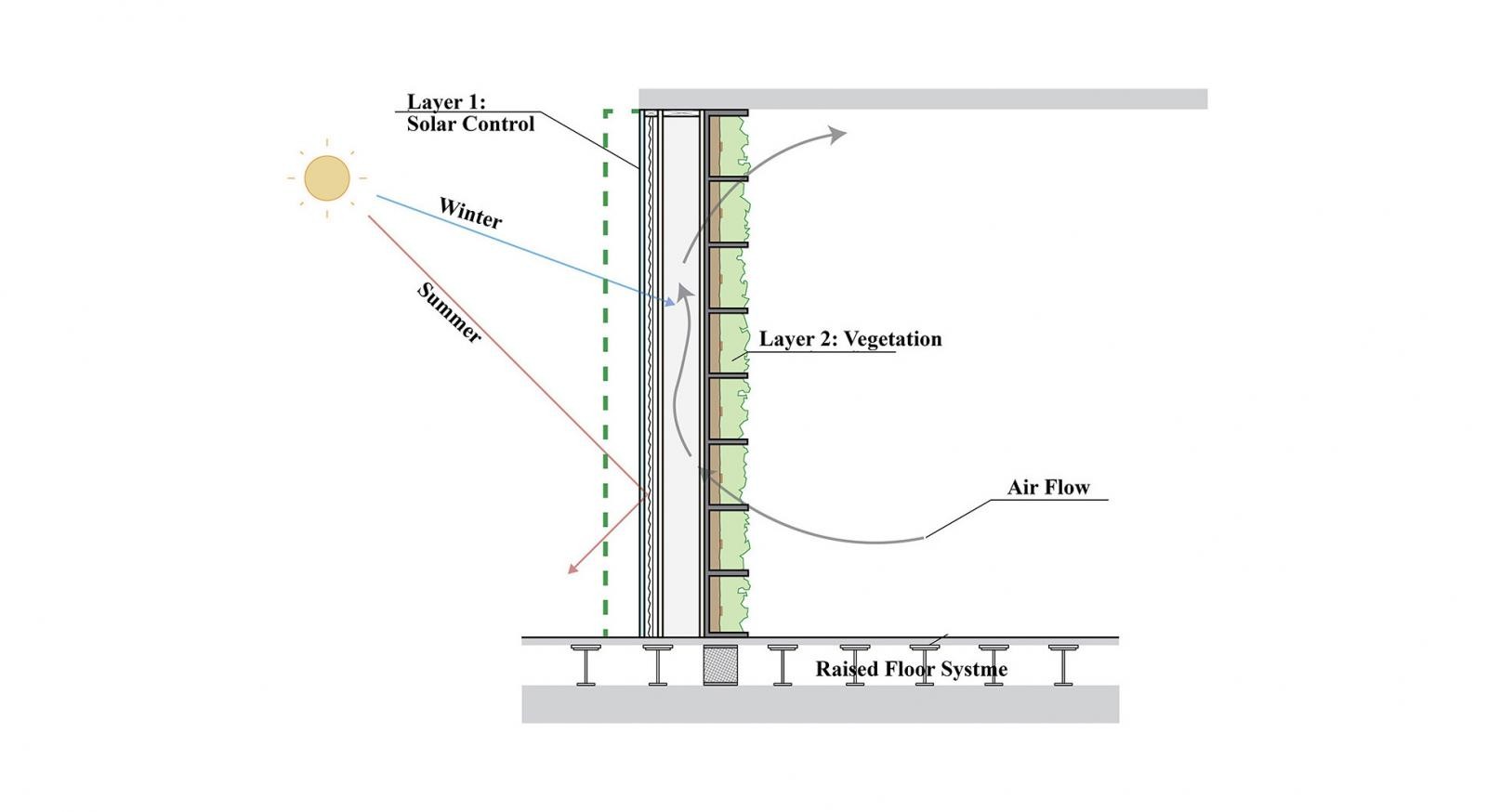The benefits of green buildings have inspired a growing movement in sustainable design and construction. But could they also inspire a new type of design education?
This fall, faculty from UMD’s School of Architecture, Planning and Preservation, the Landscape Architecture Program and the School of Public Health will begin plans for a new cross-disciplinary teaching and learning laboratory that centers on the design and study of a “green wall,” a multi-layered, biomimetic facade of sustainable materials and vegetation. Funded by a $30,000 VentureWell Faculty Grant, which supports new ways to engage students in stem innovation and entrepreneurship, the hands-on project will take a novel approach to design pedagogy, meshing design thinking and evidence-based design, health and environmental science, materials and technology, to understand how sustainable building methods impact environmental and human health.
“Green wall projects and systems aren’t new in higher education, but they are typically on a much smaller scale,” says Assistant Professor of Architecture Ming Hu, who is co-leading the project. “What makes this project unique is we’re working with people across many disciplines and it’s a flexible enough idea that it can take on the issues of our time.”
The curriculum, which will be developed over the next 10 to 12 months by Hu, Associate Professor of Architecture Jana VanderGoot, Assistant Professor of Landscape Architecture Naomi Sachs, and Post-Doctoral Fellow Paul Jacob Bueno de Mesquita, will span multiple classes within the participating programs. As the project develops, work conducted by students and faculty will be passed along to other courses in subsequent semesters. The proposed framework also integrates an empirically-based design methodology at the intersection of art and science. Stages outlined for the curriculum will include research of building materials and best practices, prototype design, build-out, experimentation and testing, data collection and publication.
“This is a new paradigm for architecture and design teaching,” says VanderGoot. “To integrate the scientific process into design curriculum—where we are conducting literature reviews, creating experiment protocol, publishing results—is a wonderful way to work some of the STEM-based methodology into design and architecture.”
Leveraging data to examine specific factors like mental health, solar radiation absorption, indoor air quality, even virus transmission will help students grasp the impact of sustainable design in very tangible ways. It also sets up a framework for like-minded projects in the future, such as buildings components that filter greywater.
“The idea is that the model is ongoing, utilizing a different design example each time,” says Hu.
According to Hu and VanderGoot, the project is a nod to the Architecture Program’s longstanding involvement with the U.S. Department of Energy Solar Decathlon, which has provided students the ultimate interdisciplinary experience of designing and constructing a net-zero home. Emulating the spirit of past projects like reACT and WaterShed, the project team hopes to create a rewarding hands-on experience for students and a venue for ongoing collaboration.
“This project is an opportunity for students from across campus to come together under a singular project, where they can learn from faculty and each other—experiment and work together across this linear space—and that’s absolutely emulated in the sort of work we’ve seen in the decathlon entries,” says VanderGoot. “Past teams, particularly those involved in reACT, were integral in helping us flesh out this proposal and get it across the finish line.”

